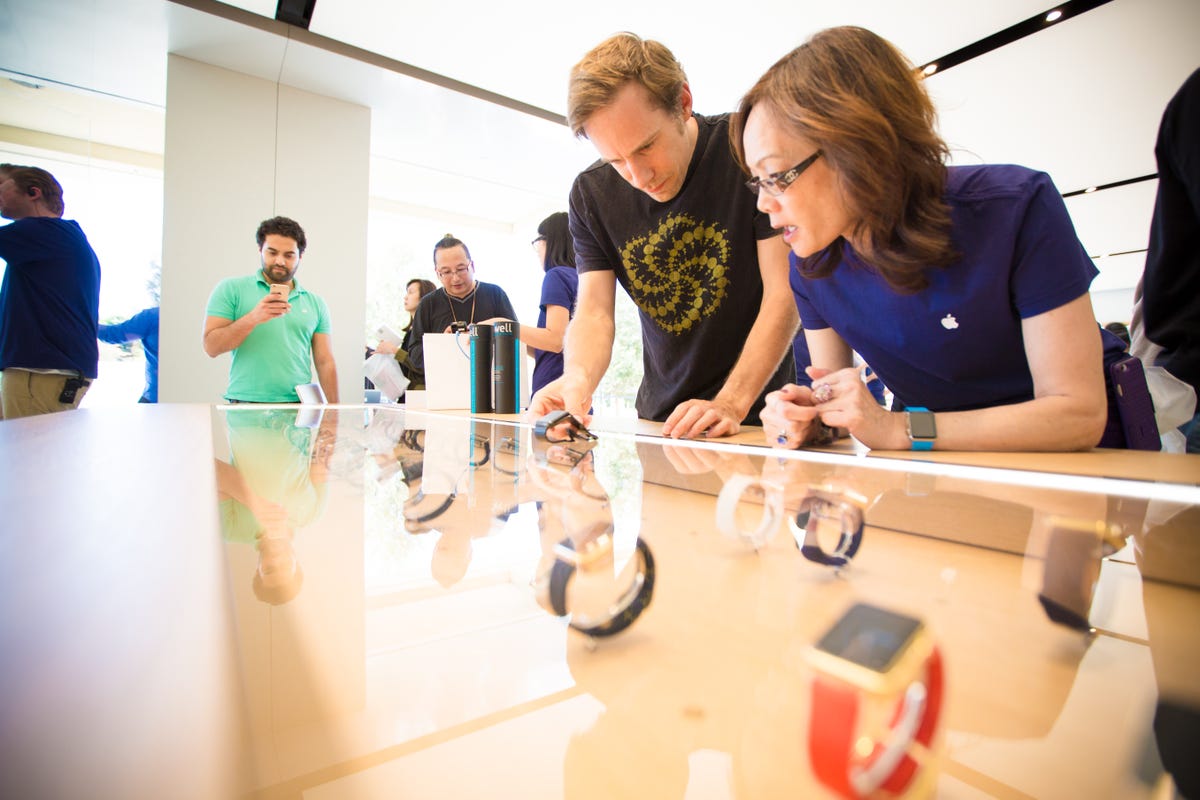
Apple through the years
In light of Apple's storied history, we gathered some of its most iconic and memorable hardware products. Some devices helped usher in a new era for the company itself, while others changed the tech landscape altogether.
Apple Computer 1 (1976)
Advertised as "the first low-cost microcomputer system with a video terminal and 8K bytes of RAM," the Apple Computer 1 was a PC card that cost $666.66 when it first launched (about $2,772.29 in today's standard). As the first-ever product from the company, the Apple Computer 1 can now fetch a pretty penny on eBay (if you can find one).
Macintosh 128K (1984)
Made famous by the iconic "1984" Super Bowl commercial, the Macintosh 128K was Apple's first Macintosh personal computer. The company planned to run the 128K with a Twiggy floppy disk drive (the same one used in the Apple Lisa 1 computer), but high error rates forced Apple to switch to the 400K Sony 3.5-inch disk drive instead.
Apple LaserWriter (1985)
The LaserWriter was one of the premiere laser printers sold to consumers when it launched in 1985 and it played a crucial part in desktop publishing.
Apple PowerBook 100, 140, and 170 (1991)
Though it doesn't look like much today, Apple's PowerBook 100 won several awards for its portable design. It featured a 9-inch monochrome display, a 640x400-pixel resolution and a trackball built into the keyboard. It went through other iterations (the 170 is seen here on the left) before being discontinued in 1992.
Newton MessagePad (1993)
As Apple's first personal digital assistant device, the MessagePad was the precursor to the iPad. It ran the Newton operating system, came with a stylus, and featured handwriting recognition.

Apple iMac G3 (1998)
With its quirky design, translucent body and bright color options, the iMac G3 helped lift Apple from (what seemed to be at the time) impending financial doom. It also marked the first mass-marketed device from Apple after the return of Steve Jobs as CEO in 1997, and ushered in the company's emphasis on industrial design.
Apple iBook (1999)
Marketed to students, the iBook shared the same aesthetic as the iMac G3 and was Apple's first consumer-focused laptop.
Apple PowerBook G4 (2001)
At the time of the PowerBook G4's debut, Windows laptops were bulky and made of black or gray plastic. Apple's laptop, however, had a silver titanium body and sharp corners. It was sleek, and elegant, and its minimalistic design was a preface for more Apple devices that shared the same aesthetic.
Apple iPod (2001)
When it first launched, the iPod stored up to 1,000 songs (which seemed like a ton back in the day), and went on to dominate the MP3 player landscape. Its rotating clickwheel let you scroll through the menu bar with ease, and Apple spawned many other variations of the iPod afterward, like the Mini, Nano, Shuffle and Touch.
Apple Power Mac G5 (2003)
(Debatably) touted as the "world's fastest personal computer" at the time, the Power Mac G5 was considered the first 64-bit PC. Though it was heavy and expensive, it still had a gorgeous design and was a powerful piece of hardware.
Apple Mac Mini (2005)
Apple really kept it simple in 2005 with its Mac Mini, a minimalistic computer that was packaged without any accessories or peripherals. Though it wasn't the most popular device from the company, it took off with users who liked to customize and modify their computers, or needed home-entertainment servers.
Apple TV (2007)
Hoping to bring iTunes into your living room, the Apple TV was a media player console that could stream content from your computer to your TV. At the time of its launch it also featured state-of-the-art 802.11n wireless networking.
The iPhone (2007)
Featuring a 3.5-inch touchscreen, a new operating system known as iOS and mobile apps, the iPhone went on to single-handedly change the mobile landscape as we know it. Sure, its latest few iterations have stopped blowing us away, but as far as the original iPhone is concerned, no one can deny its impact on the way we use and view smartphones as the pocketable computers we do today.
MacBook Air (2008)
Stripping down the design and features of its MacBook, Apple delivered the MacBook Air, a super-portable, lightweight (and expensive) laptop. College classrooms were never the same again.
Apple iPad (2010)
Lampooned for its "size-XL iPhone" design, the iPad went on to pioneer a burgeoning new mobile device for the masses: the tablet. Though it didn't come close to replacing your laptop, it had a 9.7-inch, 768-pixel resolution display and A4 processor. Despite the criticism, many lined up to buy the iPad, and after 80 days, Apple sold 3 million units.
Apple iPhone 4 (2011)
The iPhone 4 sported one of the more distinct design updates from Apple and was the first iPhone to feature a Retina Display (meaning it had a 960x640-pixel resolution compared to the 800x480 display on Samsung's flagship at the time, the Galaxy S). When Jobs introduced the phone to audiences, he also conducted the first public FaceTime call.
Apple Watch (2015)
Though Apple wasn't the first player in the smartwatch race, its Apple Watch was one the most highly anticipated smartwatch when it launched. With a classic, well-constructed design, it's the company's first wearable device.
Apple iPhone X (2017)
The iPhone X dumped the home button and replaced it with gestures. It dumped the fingerprint scanner and replaced it with facial recognition. As part of its bexel-less, edge-to-edge display, it also introduced "the notch" -- which other phone makers unfortunately copied.


